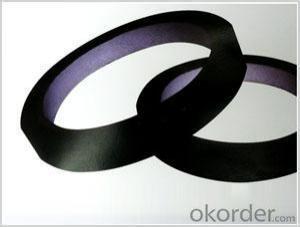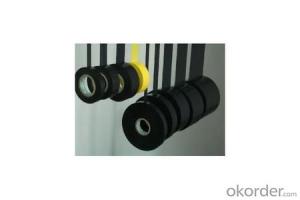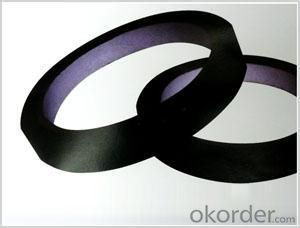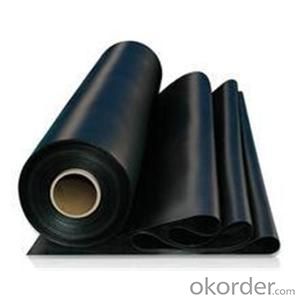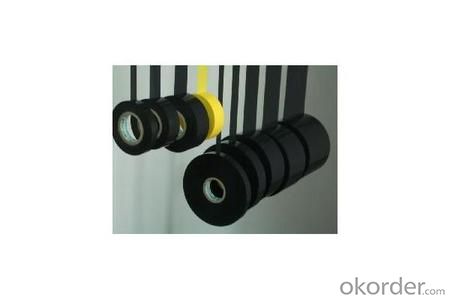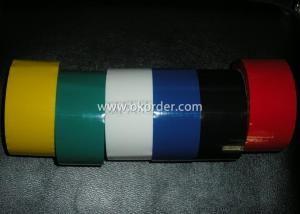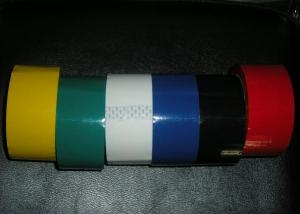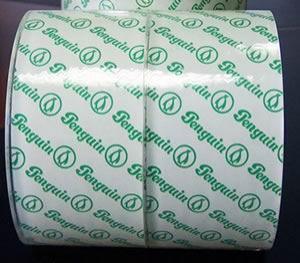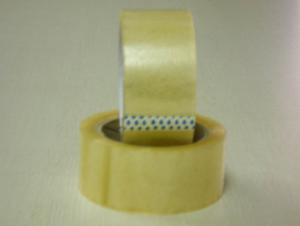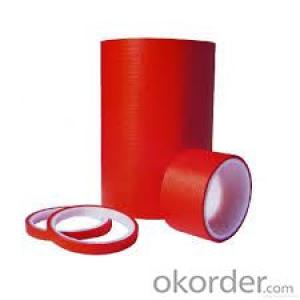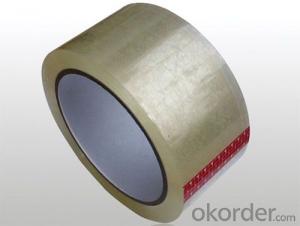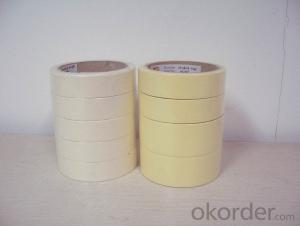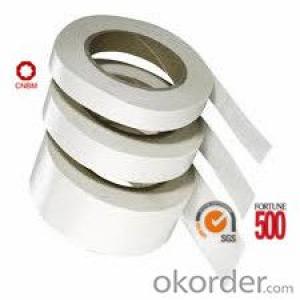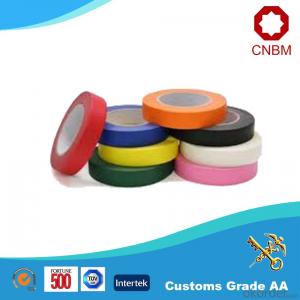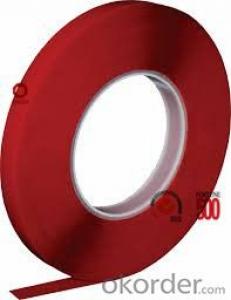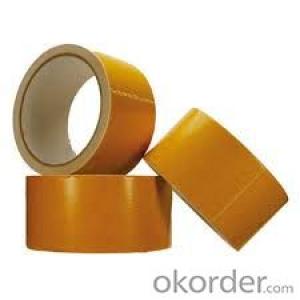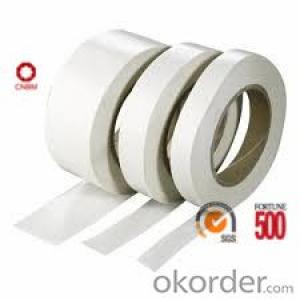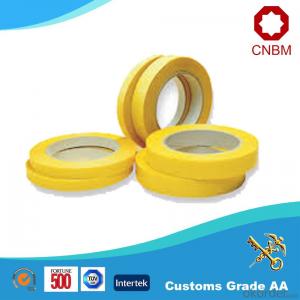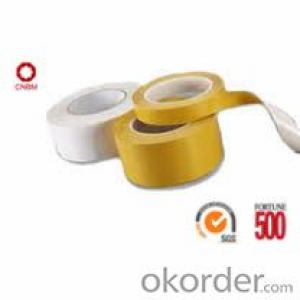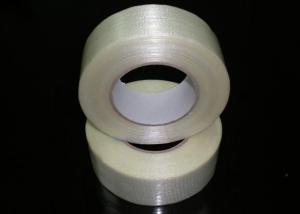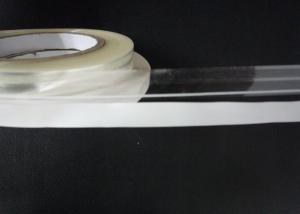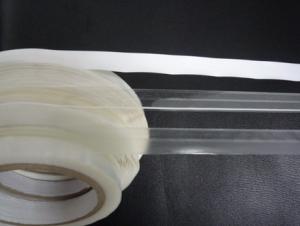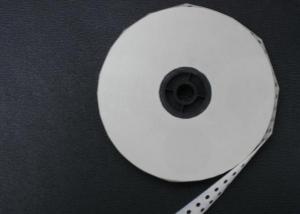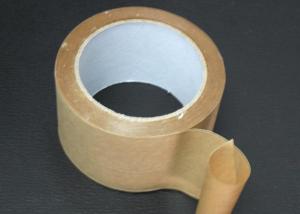China Clear Packaging Tape - Double Sided Tissue Tape Solvent Based Acrylic SGS & ISO9001 Round Adhesive Tape
- Loading Port:
- Shanghai
- Payment Terms:
- TT OR LC
- Min Order Qty:
- 10000 m²
- Supply Capability:
- 20000000 m²/month
OKorder Service Pledge
OKorder Financial Service
You Might Also Like
Description
The Double Sided Tissue Tape is of tissue as the carrier, coating with hot melt adhesive, water based acrylic, solvent based acrylic. It is excellent in flame retardant, high temperature stability, and anti-aging. It provides well insulation to various products.
Packaging Detail:
Log Roll: Length 1000mm; width: 1050mm, 1260mm, 1040mm..
Cut Roll: As per customer’s requirements
The thickness of the tape can be customized.
Main Features of the Double Sided Tissue Tape
| Item No. | Adhesive | Thickness (micron) | Initial Tack (14#mm) | Holding Power(hour) | Adhesive to steel (N/25mm) | Temperatureresistance (DC) |
| DS-110H | solvent based acrylic | 110 | ≤120 | ≥2h | ≥17 | 60 |
General purpose of Double Sided Tissue Tape: widely used for bonding, fixing for leather, foam, sponge, garment, shoe, luggage, plastic, paper splicing and stationery.
Specifications
·World Top 500 Enterprises
·Resistance to cold, heat and aging
·Best quality and competitive price
·SGS&ISO9001
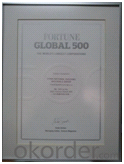
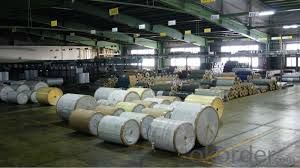
FAQ of Double Sided Tissue Tape
Q1. How about your company?
CNBM International Corporation (CNBM International) is a state-owned company and we have sound business relations with clients from over 120 countries. Currently, we have wholly-owned overseas subsidiaries and branches in 5 countries with a view to realize localization, which also represents an essential progress in our globalization target. We have over twenty years experiences.
Q2. What kind kind of service we can provide for you?
Sample of Double Sided Tissue Tape is available.
Your inquiry will be replied within 12 hours.
24 hours service
Well-trained & experienced sales representative are ready to answer you.
Q3. How long can you receive the product?
Within 7-15 working days after receiving your deposit
Welcome to contact us and visit the factory!
- Q: How do I remove packaging tape without damaging the surface?
- To remove packaging tape without damaging the surface, you can try using a hairdryer to gently heat the tape, which will make it easier to peel off. Alternatively, you can use a small amount of rubbing alcohol or vinegar to dissolve the adhesive before carefully peeling it off. It's important to be patient and take your time to prevent any potential damage to the surface.
- Q: Can packaging tape be used for sealing plastic folders?
- Yes, packaging tape can be used for sealing plastic folders. Packaging tape is designed to be strong and adhesive, making it suitable for securing and sealing various materials including plastic folders. It can help keep the contents of the folder secure and protected. However, it is important to ensure that the tape is applied properly and securely to ensure a tight seal. Additionally, it is recommended to use a clear packaging tape that will not obstruct the visibility of the folder's contents.
- Q: Is packaging tape safe for use on sensitive or confidential documents?
- No, packaging tape is not safe for use on sensitive or confidential documents. Packaging tape is designed for sealing boxes and packages, and it is not designed to protect the contents from being tampered with or viewed. It is translucent and can easily be removed or tampered with, compromising the security and confidentiality of the documents. For sensitive or confidential documents, it is recommended to use specialized document security products such as tamper-evident envelopes or security labels with built-in tamper-indicating features. These products provide an additional layer of protection and ensure that any unauthorized access or tampering is evident.
- Q: Can packaging tape be used for sealing glass containers?
- Yes, packaging tape can be used for sealing glass containers. However, it may not provide the same level of air-tightness and security as specialized glass container seals, such as rubber gaskets or silicone seals. Additionally, it is important to ensure that the tape is securely adhered to the glass surface to prevent any leakage or damage to the contents.
- Q: Can packaging tape be used for sealing metal containers or boxes?
- Yes, packaging tape can be used for sealing metal containers or boxes as it provides a strong adhesive bond and can effectively secure the contents inside. However, for heavy-duty or industrial applications, it is recommended to use specialized tapes designed specifically for sealing metal surfaces.
- Q: Can packaging tape be used for outdoor applications?
- Outdoor applications can indeed make use of packaging tape. However, it is vital to recognize that not all packaging tapes are designed for outdoor use. Regular packaging tapes may not endure extreme weather conditions or UV ray exposure, leading to deterioration or loss of adhesive properties. To guarantee the durability and efficiency of packaging tape for outdoor applications, it is advisable to opt for specialized outdoor or weather-resistant packaging tapes. These tapes are engineered with stronger adhesives and materials that can withstand outdoor elements like rain, heat, cold, and sunlight. They are often composed of materials such as acrylic or rubber, which offer superior resistance to moisture, temperature changes, and UV rays. When selecting packaging tape for outdoor applications, it is crucial to take into account the specific requirements of the intended use. This may involve factors like the duration of exposure to outdoor conditions, the weight and size of the package, and the surface to which the tape will be applied. By choosing the appropriate outdoor packaging tape, you can ensure that your packages remain securely sealed and protected, even when subjected to outdoor environments.
- Q: How does packaging tape perform on porous surfaces?
- Packaging tape generally does not perform well on porous surfaces. Porous surfaces such as cardboard, paper, or fabric tend to absorb the adhesive on the tape, resulting in a weak bond and reduced effectiveness. It is recommended to use alternative methods or specialized tapes specifically designed for porous surfaces to achieve better adhesion and secure packaging.
- Q: What is the average width of packaging tape?
- The average width of packaging tape is typically 2 inches.
- Q: Is packaging tape safe for use on photos or artwork?
- Although packaging tape can be used on photos or artwork, it is not the optimal choice. Its primary purpose is to secure boxes and packages, and it may not offer long-term protection or be archival quality. Using packaging tape on photos or artwork has the potential to harm the surface or leave residue upon removal. Additionally, it may gradually yellow or discolor over time, thereby affecting the visual appeal of the artwork or photo. To preserve the longevity and integrity of your photos or artwork, it is recommended to employ acid-free archival tape specifically designed for this purpose. Archival tape is crafted with materials that are safe for delicate surfaces and can be effortlessly removed without causing any damage. In conclusion, while packaging tape can serve as a temporary solution, it is advisable to utilize archival tape to ensure the utmost protection for your valuable photos or artwork.
- Q: Is packaging tape safe to use on plastic hangers?
- Yes, packaging tape is generally safe to use on plastic hangers. Packaging tape is designed to securely hold items together and can adhere well to various surfaces, including plastic. However, it's important to consider the type of plastic hanger you have and the purpose for which it is being used. While packaging tape may work well for temporarily holding clothes on a plastic hanger, it may leave residue or cause damage if left for an extended period. It's advisable to test a small area of the hanger first to ensure that the tape does not cause any harm or leave any marks. Additionally, if the plastic hanger is being used for displaying or storing delicate or valuable clothing, it may be better to opt for gentle alternatives such as fabric-friendly tape or non-adhesive hanger attachments.
Send your message to us
China Clear Packaging Tape - Double Sided Tissue Tape Solvent Based Acrylic SGS & ISO9001 Round Adhesive Tape
- Loading Port:
- Shanghai
- Payment Terms:
- TT OR LC
- Min Order Qty:
- 10000 m²
- Supply Capability:
- 20000000 m²/month
OKorder Service Pledge
OKorder Financial Service
Similar products
Hot products
Hot Searches
Related keywords
